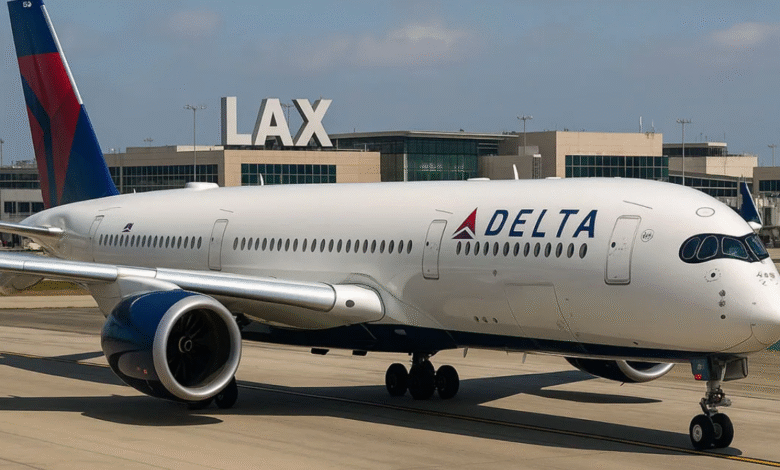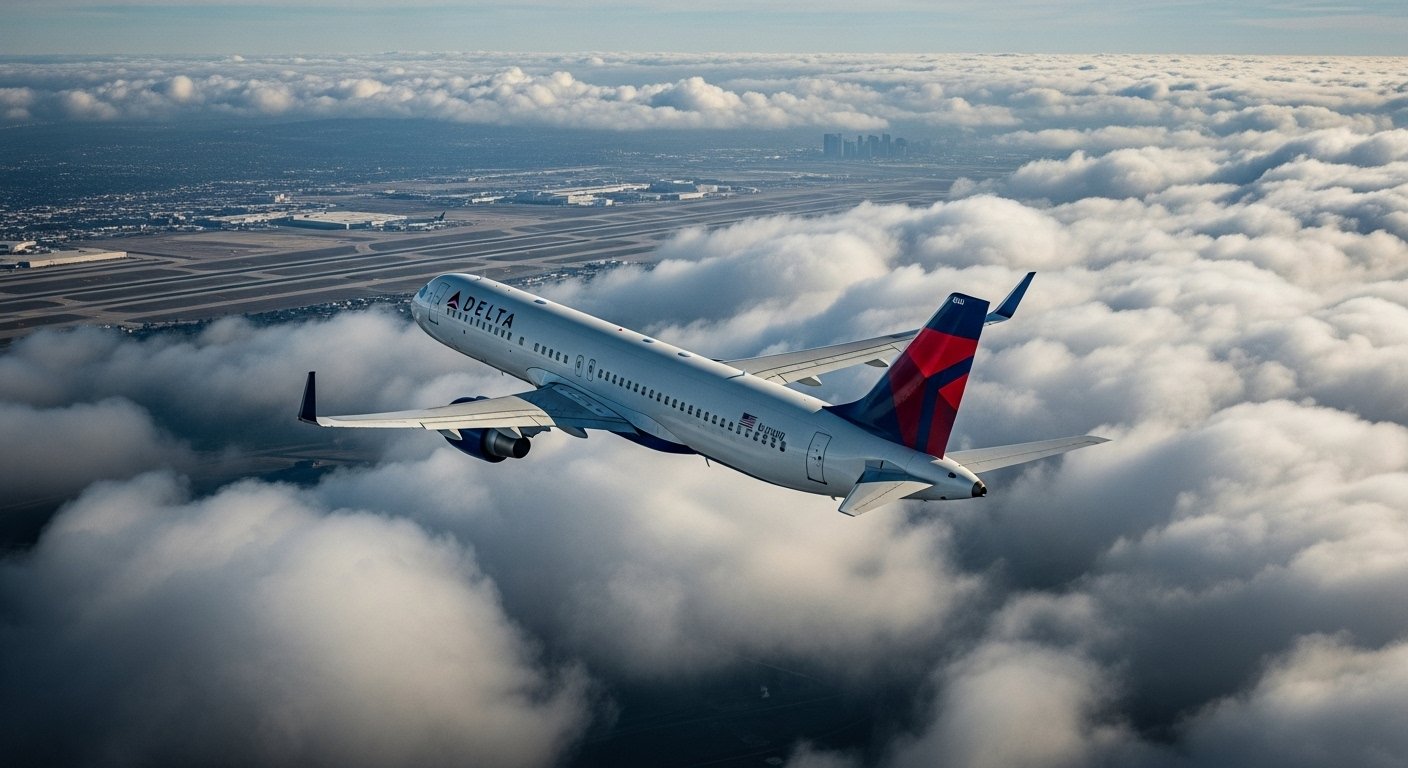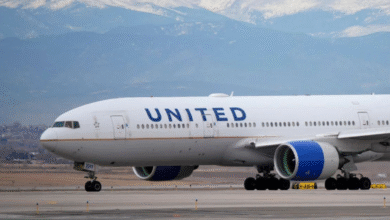Delta Flight DL275 Diverted LAX: What Really Happened

Delta flight DL275 diverted LAX has sparked curiosity and questions among travelers. Here’s a deep dive into what caused the diversion, what passengers experienced, and what it means for future flights.
The Unexpected Diversion of Delta Flight DL275
When people saw the news that Delta flight DL275 diverted LAX, it raised more than a few eyebrows. Flight diversions always create a mix of confusion, curiosity, and sometimes panic, but aviation experts know that such events often have practical explanations. DL275 was originally scheduled to continue on its planned route, yet a diversion to Los Angeles International Airport changed the entire narrative of that journey.
Understanding why a flight like DL275 would divert requires looking at how airlines make safety and operational decisions in real time. It’s not just about what happens in the cockpit but also what’s happening with weather patterns, airport logistics, and sometimes even medical situations onboard. In this case, the diversion became a trending topic not just among aviation enthusiasts but also across social media platforms, as passengers shared their firsthand accounts.
Why Do Airlines Divert Flights?
The phrase Delta flight DL275 diverted LAX may sound dramatic, but diversions are part of everyday airline operations. Pilots and airlines are constantly making decisions that balance passenger safety with logistical realities.
One of the most common reasons for diversions is unexpected weather. Even with sophisticated radar and forecasting technology, storms and turbulence can evolve faster than predicted, forcing reroutes or unplanned landings. Another frequent reason is mechanical checks. Aircraft are highly complex machines, and even minor warning signals can prompt pilots to land at the nearest large airport for a thorough inspection.
Medical emergencies also top the list. With hundreds of passengers on board, it’s not unusual for someone to suddenly require urgent medical attention. Los Angeles International Airport, being one of the largest airports in the world, has full facilities to handle such situations, which may explain why DL275 ended up there.
The Importance of Los Angeles as a Diversion Hub
When Delta flight DL275 diverted LAX, it highlighted Los Angeles’ role as a crucial diversion hub. LAX is not just a destination airport—it’s an operational powerhouse with the capacity to handle emergency landings, medical diversions, and aircraft requiring immediate attention.
From a geographic standpoint, Los Angeles is ideally positioned for transpacific and cross-country routes. Its massive infrastructure allows it to absorb unplanned landings without throwing the entire airport into chaos. For airlines like Delta, that makes it a natural choice when a diversion is unavoidable.
Additionally, LAX is home to advanced maintenance facilities and large pools of technical staff. If DL275 had a technical issue, landing at LAX ensured that the aircraft could be examined, repaired if necessary, and either put back into service quickly or replaced with a different aircraft for onward travel.
Passenger Experience During a Diversion
For passengers, the words Delta flight DL275 diverted LAX likely sparked mixed emotions. On one hand, there’s reassurance in knowing the airline prioritizes safety. On the other, there’s frustration with delays, missed connections, and uncertainty about what comes next.
Inside the cabin, diversions are often announced calmly by the flight crew. Passengers are told that the aircraft will be landing earlier than expected, but the reasoning might not always be fully explained until after landing. This lack of detail can create speculation. In today’s digital world, many passengers immediately take to Twitter, Instagram, or TikTok to share the news, which often spreads faster than official airline updates.
Still, most seasoned travelers understand that a diversion is not necessarily a crisis. Instead, it’s an example of the aviation industry’s safety-first philosophy. While inconvenient, landing at LAX provided DL275’s passengers with access to a world-class airport, complete with customer service representatives trained to rebook connections, handle baggage rerouting, and provide accommodations if needed.
Behind the Scenes: Airline Operations During a Diversion
What happens behind the curtain when Delta flight DL275 diverted LAX is just as fascinating as the experience inside the cabin. Airline operations centers (AOCs) play a massive role in coordinating these changes. Once a diversion is confirmed, the AOC immediately begins communicating with the airport, ground handlers, and customer service teams to manage the disruption.
Airlines must quickly secure a gate, prepare staff to assist passengers, and decide whether the aircraft will continue on its route after a quick turnaround or whether a replacement plane will be dispatched. All of this happens within minutes, with teams of experts analyzing everything from crew duty hours to fuel availability.
It’s also important to note that diversions affect more than one flight. When an aircraft like DL275 diverts, it can ripple through the airline’s schedule, impacting flights later in the day. Delta’s ability to handle these changes efficiently is part of why it consistently ranks high in operational performance among U.S. carriers.
Lessons for Travelers When Flights Divert
Hearing that Delta flight DL275 diverted LAX is a reminder to travelers that flexibility is a vital skill when flying. Diversions are rare, but when they happen, passengers can make the experience smoother by staying calm and prepared.
One practical tip is always to travel with essential items—like medications, chargers, and a change of clothes—in carry-on bags. If a diversion leads to an overnight delay, those essentials can make the situation far less stressful.
Another lesson is the importance of real-time information. While airlines do their best to communicate updates, mobile apps and flight-tracking websites often provide the fastest alerts. Passengers on DL275 who were tracking the flight online likely knew about the diversion before the official announcement.
Expert Opinions on DL275’s Diversion

Aviation experts often remind travelers that the phrase Delta flight DL275 diverted LAX is not a cause for alarm but rather a case study in aviation safety and flexibility. Safety protocols are designed to err on the side of caution, and diversions are a visible demonstration of those protocols at work.
Some pilots have commented that large airports like LAX are always preferred diversion points because of their ability to handle everything from refueling to customs clearance if needed. Delta, in particular, has a strong operational base in Los Angeles, giving it an edge in managing diversions smoothly.
Industry analysts also note that while diversions may inconvenience travelers, they reinforce consumer trust in the airline. When passengers see that their well-being is prioritized—even at the cost of delays—it strengthens long-term loyalty.
What This Means for Delta and Its Passengers
The event of Delta flight DL275 diverted LAX has broader implications beyond just one flight. It highlights the resilience of airline operations and the importance of robust infrastructure in major hubs like Los Angeles.
For Delta, handling the diversion efficiently means maintaining its reputation for reliability. The way the airline managed DL275 will likely influence passenger perceptions, especially for those who experienced the event firsthand. If handled well—with prompt rebooking, clear communication, and good customer service—the diversion could even enhance Delta’s image as a passenger-first airline.
For passengers, the key takeaway is that diversions are not rare anomalies but part of modern air travel. Being mentally and practically prepared for them can transform an unexpected change into just another travel story to share.
Table: Common Reasons Flights Like DL275 Divert
| Reason for Diversion | Explanation | Why LAX Is Chosen |
|---|---|---|
| Weather Disruptions | Sudden storms, turbulence, or low visibility | LAX has advanced weather systems and multiple runways |
| Medical Emergencies | Passenger requires urgent treatment | LAX has world-class medical facilities |
| Mechanical Concerns | Aircraft systems trigger warning signals | LAX provides immediate technical support |
| Operational Needs | Crew duty limits, fuel issues, or congestion | LAX’s scale allows quick accommodation |
FAQs on Delta Flight DL275 Diverted LAX
Q: Why was Delta flight DL275 diverted to LAX?
A: While specific details may vary, diversions usually occur due to weather, medical, or mechanical reasons. LAX is a preferred diversion hub because of its capacity and facilities.
Q: Was it safe for DL275 to divert to Los Angeles?
A: Absolutely. Diversions are safety-first decisions. Pilots follow strict protocols to ensure passengers are always kept out of harm’s way.
Q: How does Delta handle passengers after a diversion?
A: Delta provides rebooking, customer support, and sometimes accommodations, depending on the situation. Passengers of DL275 would have received assistance at LAX.
Q: Do diversions like this happen often?
A: They don’t happen every day, but they are common enough that airlines are well-prepared for them. Most passengers will experience one at least once if they fly frequently.
Q: Will DL275’s diversion affect future flights?
A: Not directly. However, diversions can cause temporary schedule adjustments until the airline rebalances its operations.
Conclusion: The Bigger Picture
The story of Delta flight DL275 diverted LAX is less about disruption and more about the aviation industry’s commitment to safety and adaptability. While inconvenient for passengers, diversions like this prove that airlines put human lives ahead of schedules.
For travelers, the key is to stay informed, flexible, and confident in knowing that a diversion is not a failure but a safeguard. In the end, DL275’s diversion reminds us all why aviation remains one of the safest forms of travel in the world.


